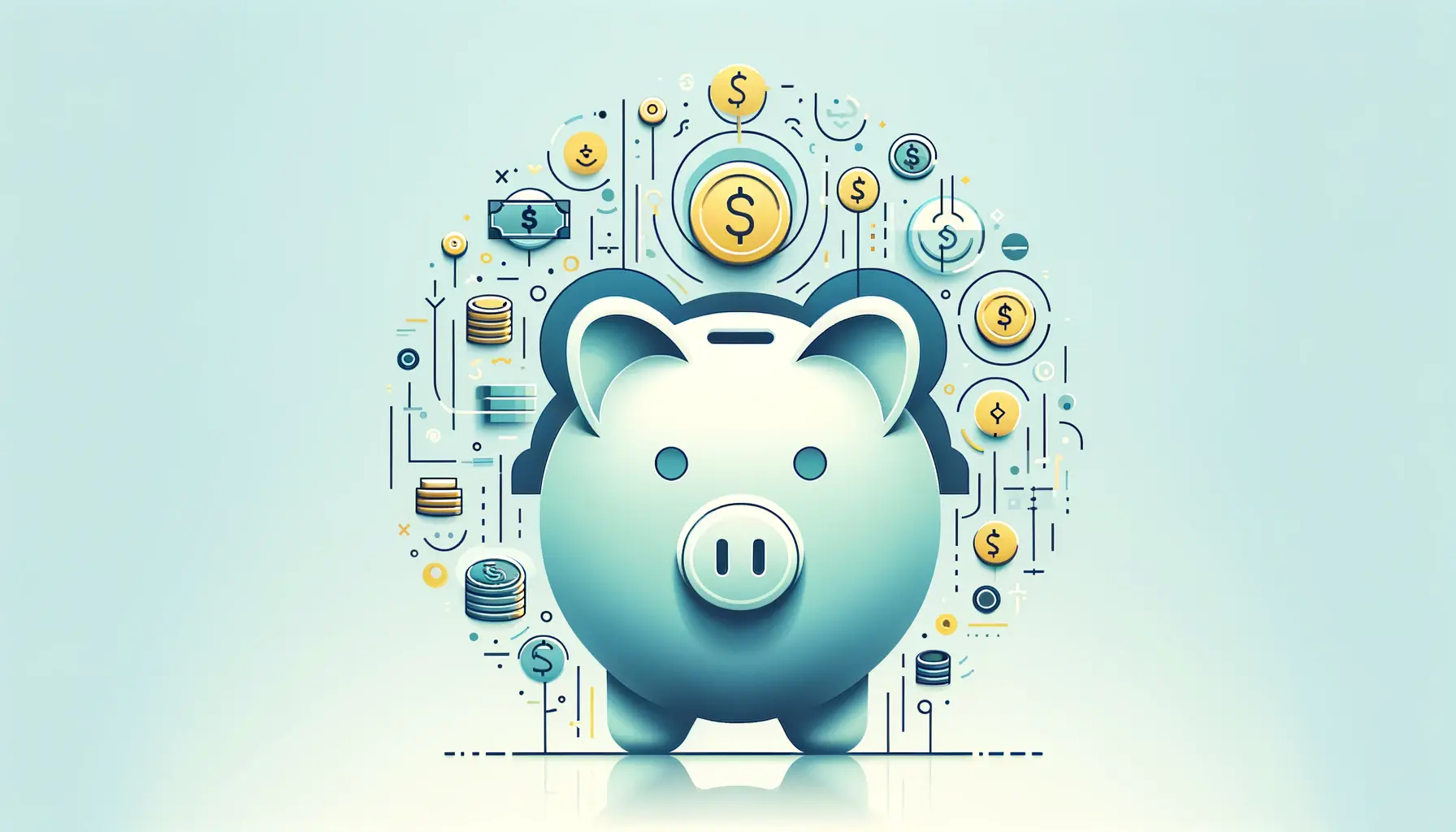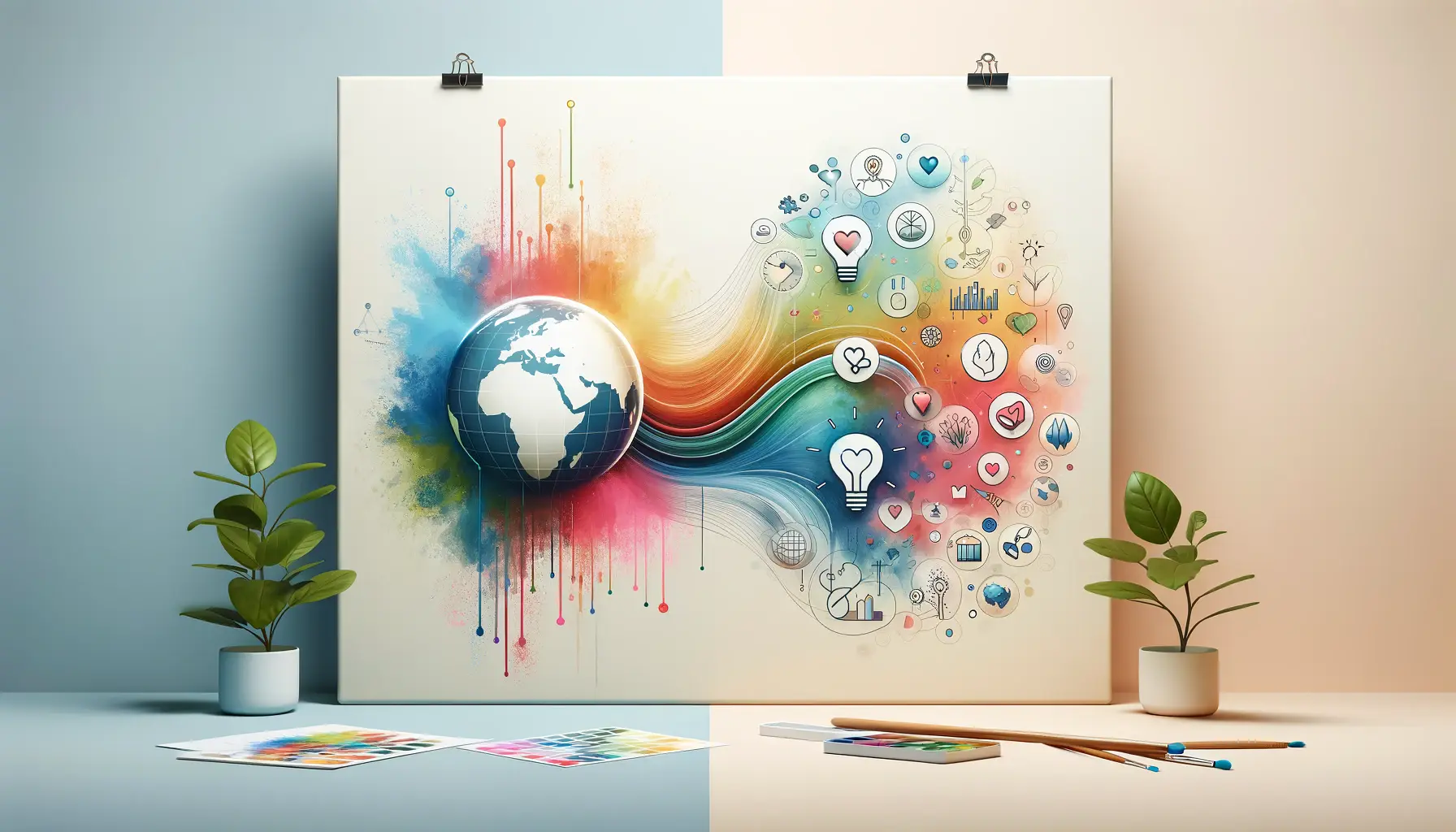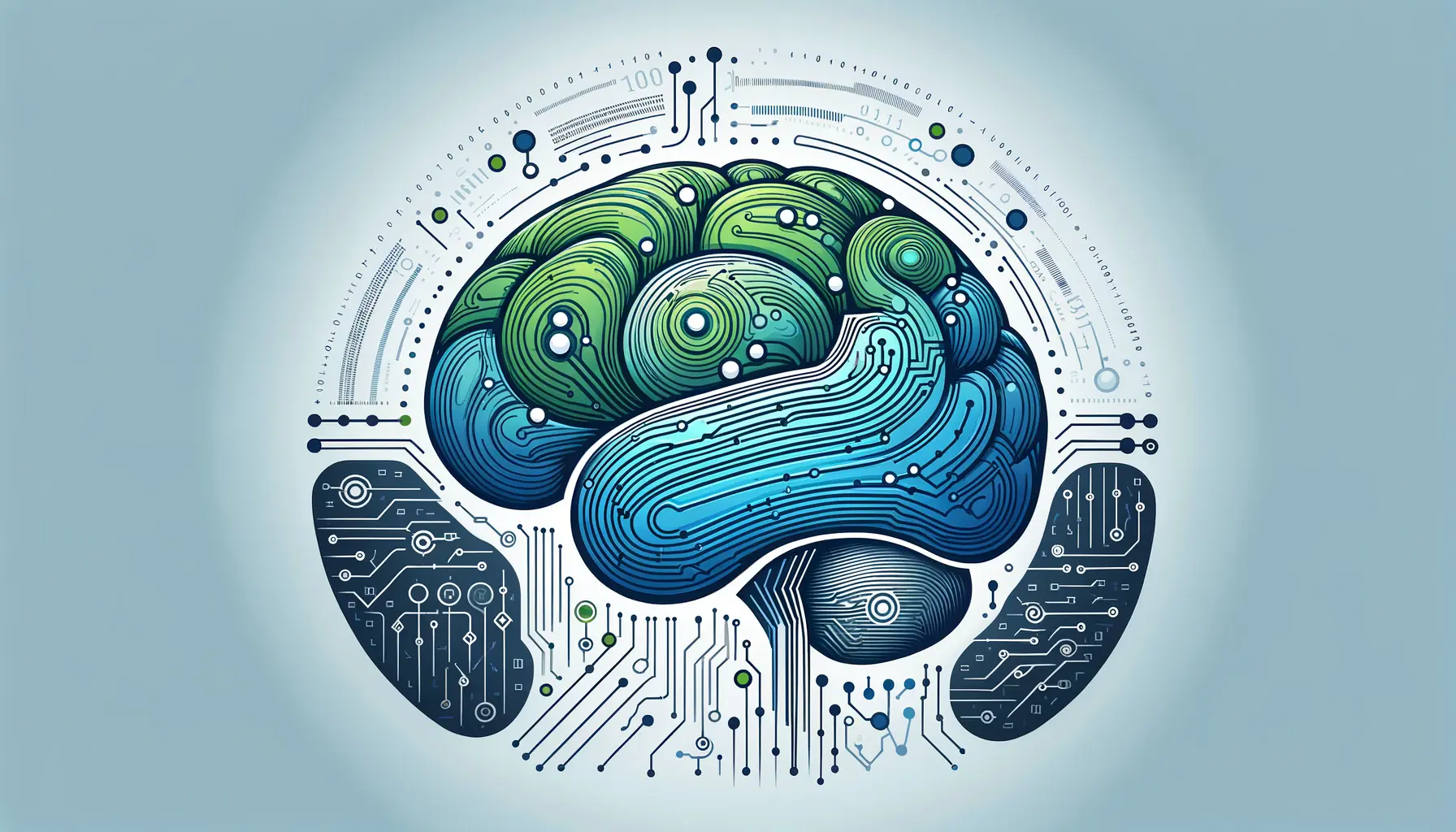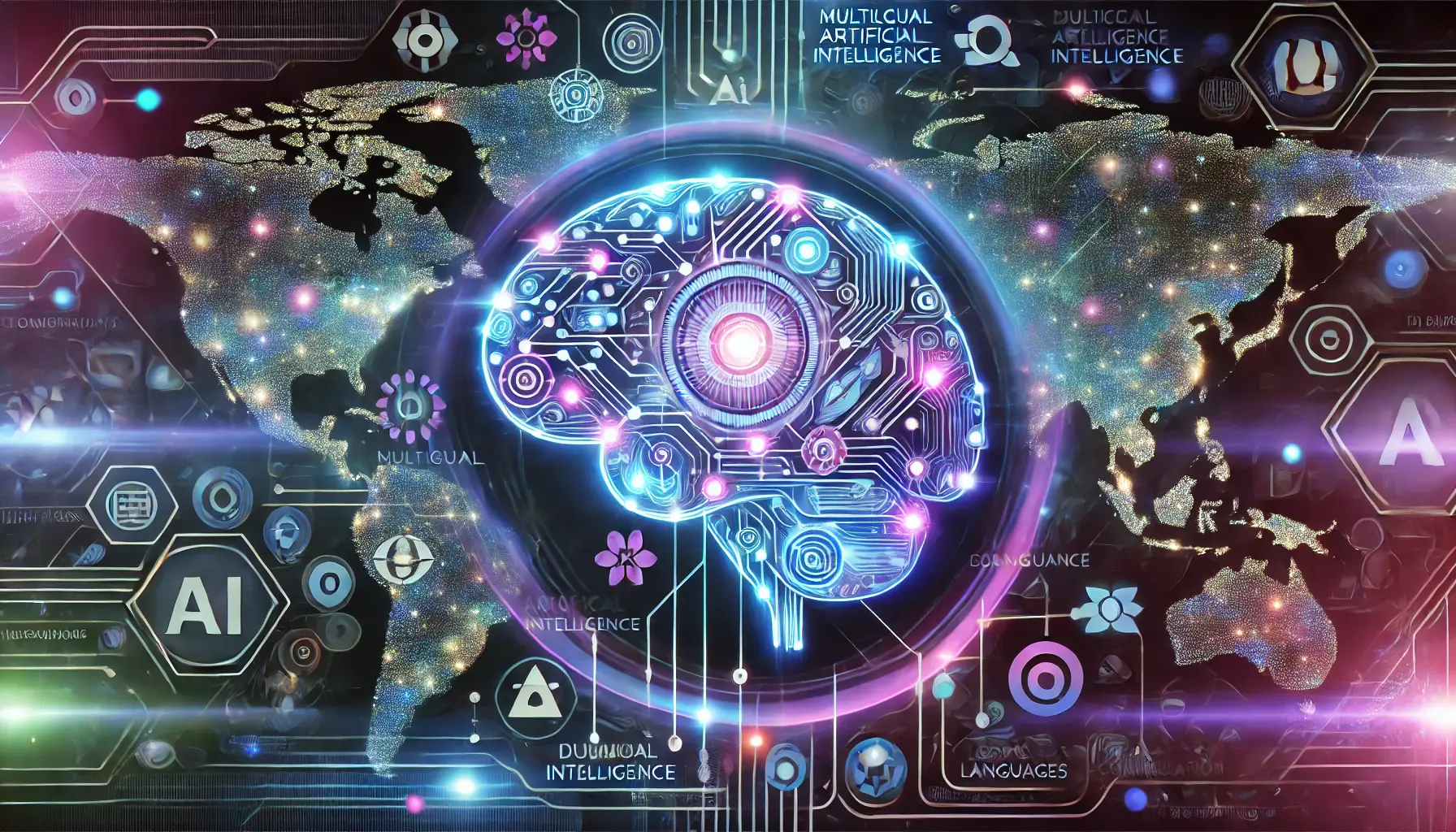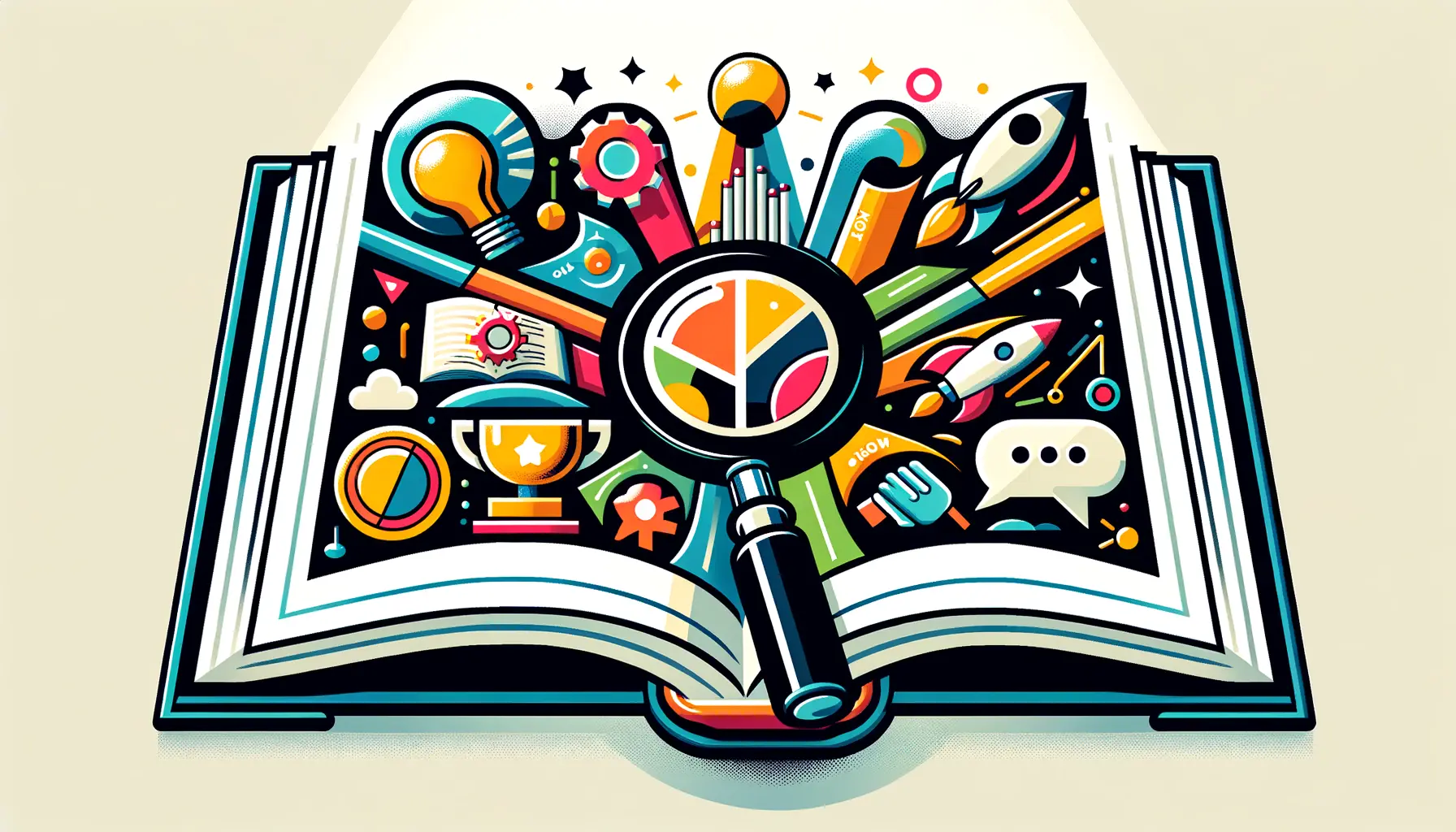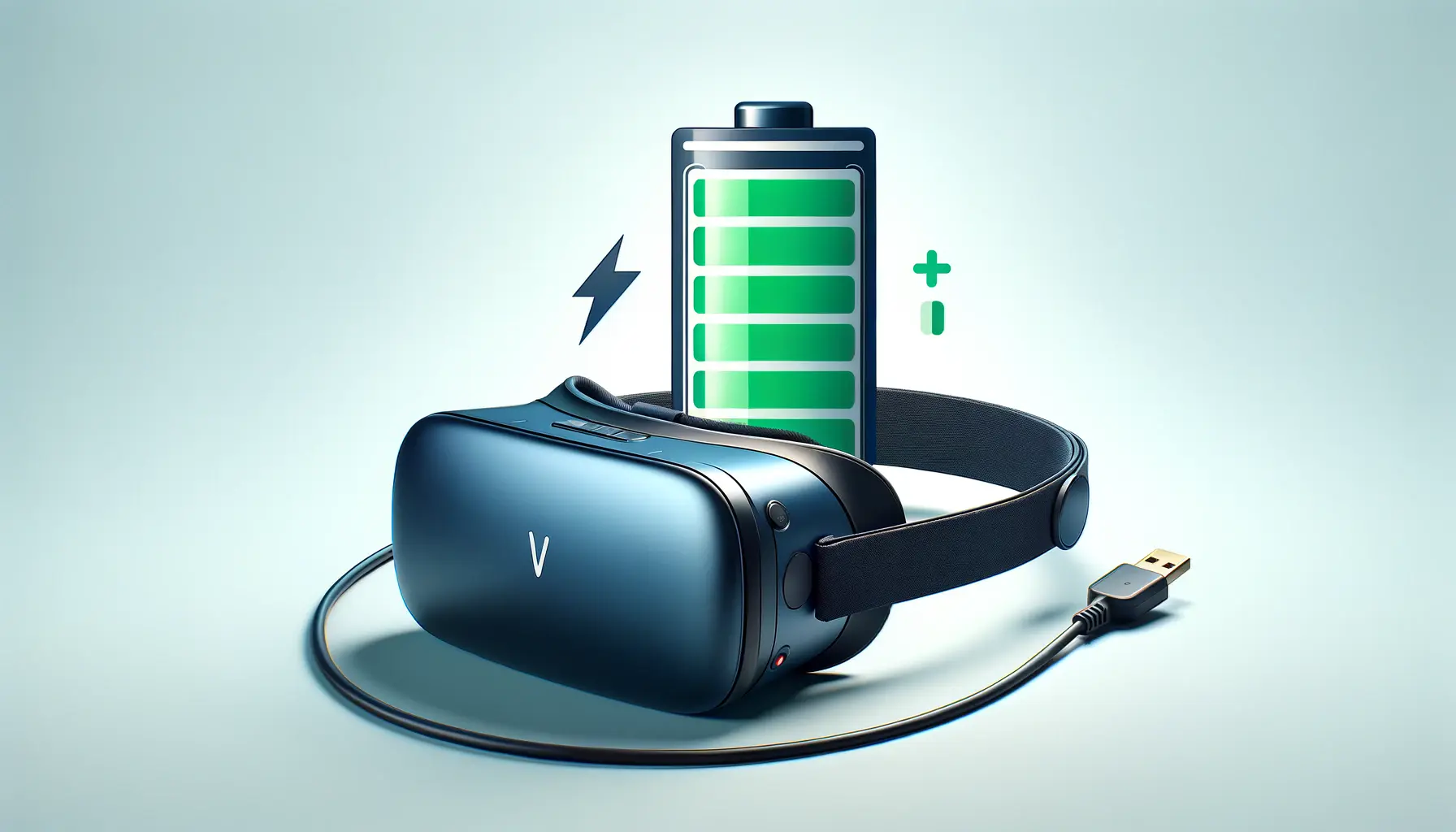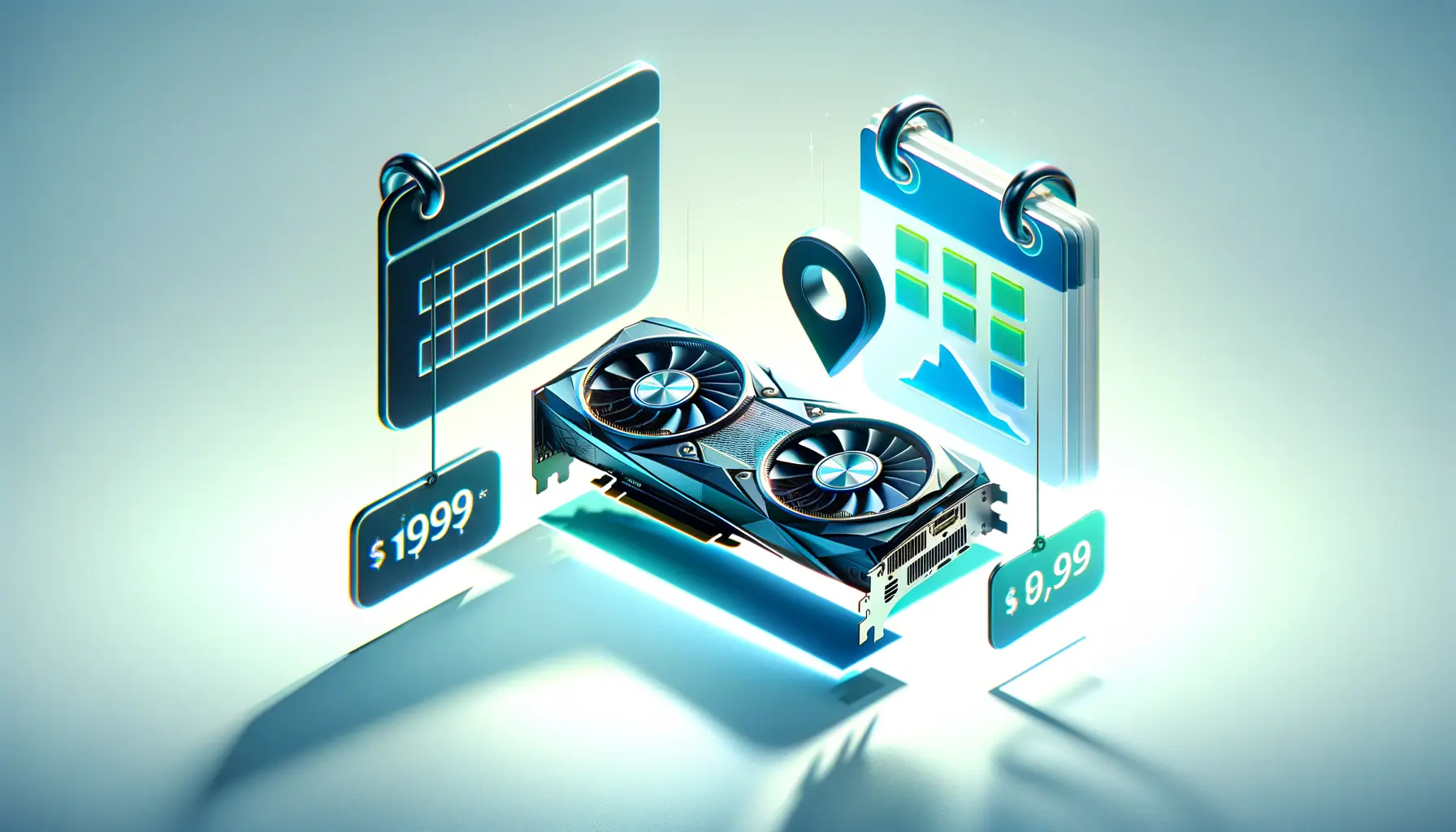As the digital art world continues to evolve, one of the most groundbreaking developments has been the introduction of DALL-E by OpenAI.
This AI-driven tool has the remarkable ability to generate images from textual descriptions, offering endless possibilities for creativity and innovation.
With its growing popularity, understanding the pricing structure of DALL-E is crucial for artists, designers, and businesses looking to leverage this technology.
The advent of DALL-E represents a significant leap forward in the field of artificial intelligence, particularly in the realm of creative and design work.
By enabling users to create detailed images and artworks through simple text prompts, DALL-E has opened up new avenues for artistic expression and commercial visual content creation.
However, with great power comes great curiosity, especially regarding how this technology is priced and accessed by the general public and professionals alike.
- Understanding DALL-E’s Pricing Model
- Maximizing Your DALL-E Credits
- Exploring DALL-E’s Commercial Use Cases
- Challenges and Considerations in Using DALL-E
- Optimizing DALL-E for Specific Industries
- Future Developments in AI Image Generation
- Strategies for Incorporating DALL-E into Creative Workflows
- Embracing the Future with DALL-E
- DALL-E Pricing Guide FAQ
Understanding DALL-E’s Pricing Model
At the heart of DALL-E’s appeal is its innovative pricing model, designed to make this advanced technology accessible while also supporting its continuous development.
OpenAI has implemented a credit-based system, where users spend credits to generate images.
This model is pivotal in understanding how costs can accumulate and how to budget for using DALL-E effectively in various projects.
The credit system is straightforward: each image generation or modification task requires a certain number of credits.
Initially, OpenAI provides new users with a set number of free credits, allowing them to explore the capabilities of DALL-E without immediate investment.
This approach not only democratizes access to cutting-edge AI technology but also encourages experimentation among users from diverse backgrounds.
Free Credits and Subscription Plans
For newcomers, DALL-E offers an enticing package of free credits upon signing up.
This initial batch of credits is a gateway to experiencing the power of AI-driven image creation firsthand.
After these free credits are used, individuals have the option to purchase additional credits in packs, catering to both casual users and high-volume commercial needs.
Subscription plans present another layer to DALL-E’s pricing strategy.
These plans are tailored for users who require a steady flow of credits for ongoing projects.
By subscribing, users can ensure they have a constant supply of credits each month, enabling them to plan and execute larger or more frequent projects without the worry of running out of credits.
Remember, the choice between pay-as-you-go credits and subscription plans should be based on your specific usage patterns and project needs.
As we delve deeper into the specifics of DALL-E’s pricing, it’s clear that OpenAI has structured its model to accommodate a wide range of users, from hobbyists exploring AI art for the first time to professionals integrating AI into their workflow.
The next sections will explore the benefits and considerations of this pricing model, ensuring you can make the most out of DALL-E’s capabilities.
Maximizing Your DALL-E Credits
Understanding how to effectively utilize DALL-E credits is essential for both maximizing creative potential and managing costs.
Whether you’re a digital artist, a marketing professional, or someone just exploring the possibilities of AI-generated imagery, knowing how to stretch your credits can significantly enhance your DALL-E experience.
Here are some strategies to ensure you get the most out of your DALL-E credits:
Strategic Planning of Image Generation
Before diving into creating images, it’s wise to plan your projects carefully.
Consider the scope and requirements of your project to determine how many images you’ll need and what type of modifications might be necessary.
This foresight can help prevent unnecessary credit expenditure on trial and error.
- Define your objectives: Clearly outline what you aim to achieve with each image generation request to minimize wasted credits.
- Sketch your ideas: Even a rough sketch or a detailed description can help you refine your prompts, leading to more accurate results on the first try.
Effective Prompt Crafting
The specificity and clarity of your text prompts directly influence the outcome of the generated images.
Crafting effective prompts can reduce the need for multiple attempts, saving credits in the process.
- Be as descriptive as possible in your prompts to guide the AI towards your desired outcome.
- Utilize keywords related to style, color, and composition to narrow down the possibilities and achieve closer matches to your vision.
Leveraging Free Credits for Experimentation
Make the most of the free credits provided by OpenAI to experiment with different prompt styles and understand how DALL-E responds.
This experimentation phase is crucial for learning how to craft prompts that yield the best results.
- Test different approaches: Use your free credits to explore various prompt formulations and image styles.
- Analyze results: Take note of which prompts lead to the most satisfying images, and use these insights to refine future requests.
Consider creating a prompt template or a guide based on your successful experiments. This can streamline your workflow and improve consistency in your projects.
By adopting these strategies, you can ensure that every credit spent on DALL-E contributes to your project’s success, whether you’re creating unique artwork, generating visuals for marketing campaigns, or simply exploring the boundaries of AI-assisted creativity.
Exploring DALL-E’s Commercial Use Cases
The versatility of DALL-E extends far beyond personal projects and artistic exploration.
Its ability to generate high-quality, unique images from textual descriptions opens up a plethora of commercial applications.
Businesses and professionals across various industries are finding innovative ways to incorporate DALL-E into their workflows, leveraging the technology to enhance their offerings and engage their audiences more effectively.
Marketing and Advertising
In the realm of marketing and advertising, the visual component is crucial for capturing attention and conveying messages.
DALL-E enables marketers to quickly generate diverse and creative visuals that can be tailored to specific campaigns, themes, or target demographics.
- Ad Creatives: Generate unique and eye-catching images for social media ads, banners, and posters.
- Content Marketing: Enhance blog posts, articles, and newsletters with custom illustrations that match the content’s theme.
Product Design and Development
For product designers and developers, DALL-E can serve as a powerful tool for brainstorming and prototyping.
It offers a fast and cost-effective way to visualize ideas and explore different design concepts without the need for extensive resources.
- Create concept art for products, packaging designs, or branding materials.
- Visualize interior design projects or architectural changes before implementation.
Entertainment and Media
The entertainment industry, including gaming, film, and digital media, can benefit significantly from DALL-E’s capabilities.
Concept artists and creators can use the tool to bring their visions to life, creating detailed scenes, characters, and environments that spark imagination.
- Storyboarding: Generate scenes and backgrounds for storyboards to aid in pre-production planning.
- Character Design: Create diverse character concepts for games, animations, and graphic novels.
DALL-E’s impact on commercial projects highlights its potential to revolutionize how businesses approach creative processes. By reducing the time and cost associated with content creation, DALL-E allows companies to experiment more freely and bring innovative ideas to market faster.
As we continue to explore DALL-E’s commercial applications, it’s clear that the technology’s potential is only beginning to be tapped.
From enhancing marketing efforts to streamlining product design and enriching entertainment experiences, DALL-E is setting a new standard for creativity in the digital age.
Challenges and Considerations in Using DALL-E
While DALL-E offers remarkable capabilities for image generation, users and businesses must navigate several challenges and considerations.
These range from ethical concerns to practical issues related to the technology’s application.
Understanding these factors is crucial for anyone looking to integrate DALL-E into their creative process or commercial projects effectively.
Ethical and Copyright Concerns
One of the most significant challenges surrounding DALL-E and similar AI technologies involves ethical considerations and copyright issues.
As DALL-E generates images based on a vast dataset of existing artworks and photographs, questions about originality, copyright infringement, and the rights of the creators whose works contributed to the training data arise.
- Respecting Copyright: Users must ensure that the images generated by DALL-E are not infringing on existing copyrights, especially when used for commercial purposes.
- Attribution and Originality: Determining the ownership of AI-generated images and the extent to which they can be considered original works requires careful consideration.
Quality and Relevance of Outputs
Another challenge involves the quality and relevance of the images produced by DALL-E.
While the technology is capable of generating highly detailed and creative visuals, the results may not always align with the user’s expectations or project requirements.
- Users may need to refine their prompts and experiment with different approaches to achieve the desired outcome, which can be time-consuming and require a significant number of credits.
- The variability in output quality necessitates a review process to ensure that the generated images meet the necessary standards for use in professional or commercial contexts.
Technical Limitations and Accessibility
Despite its advanced capabilities, DALL-E is not without its technical limitations.
The complexity of certain prompts, the nuances of artistic styles, and the subtleties of human creativity can sometimes be challenging for the AI to replicate accurately.
Additionally, accessibility issues, such as the availability of credits and the cost associated with high-volume usage, can limit the tool’s use for some individuals and organizations.
- Understanding Limitations: Users should be aware of the types of images and styles that DALL-E can generate effectively and recognize the boundaries of its capabilities.
- Managing Costs: Balancing the creative potential of DALL-E with the practical aspects of credit usage and subscription costs is essential for sustainable use.
Despite these challenges, DALL-E remains a powerful tool for creative expression and commercial application. By addressing ethical considerations, managing expectations regarding output quality, and navigating technical limitations, users can harness the full potential of this AI-driven image generator.
As we continue to explore the possibilities and address the challenges associated with DALL-E, it’s clear that the tool represents a significant advancement in the field of AI and creative technology.
With careful consideration and responsible use, DALL-E can serve as a valuable asset for artists, designers, and businesses alike.
Optimizing DALL-E for Specific Industries
The application of DALL-E extends across various industries, each with unique needs and challenges.
By optimizing the use of DALL-E, professionals in these sectors can unlock new levels of efficiency and creativity.
Tailoring the approach to leveraging DALL-E’s capabilities can lead to groundbreaking results, whether in creating compelling visuals, enhancing product designs, or generating innovative solutions to complex problems.
Fashion and Apparel Design
In the fast-paced world of fashion, staying ahead of trends and continuously innovating is crucial.
DALL-E can significantly impact this industry by offering a tool for rapid prototyping of designs, pattern generation, and visualization of apparel in various styles and settings.
- Trend Forecasting: Generate images that predict upcoming trends by combining current fashion elements with innovative ideas.
- Custom Fabric Patterns: Create unique fabric patterns and designs that can be directly applied to apparel, saving time and resources in the design process.
Education and E-Learning
Educators and e-learning developers can use DALL-E to create custom illustrations, diagrams, and educational materials that cater to diverse learning styles.
This not only enhances the learning experience but also aids in explaining complex concepts through visual aids.
- Develop engaging course materials with tailored images that align with the curriculum and resonate with students.
- Illustrate historical events, scientific phenomena, and abstract concepts in a visually appealing manner to facilitate understanding.
Healthcare and Medical Visualization
The healthcare industry can benefit from DALL-E by using it to generate medical illustrations, patient education materials, and visual aids for research.
These applications can improve patient understanding, assist in medical training, and support research initiatives.
- Anatomical Illustrations: Produce detailed images of human anatomy for educational purposes, patient consultations, and medical publications.
- Research Visualization: Create visuals that represent medical data, research findings, or hypothetical scenarios to support scientific communication.
By understanding the specific needs and challenges of each industry, professionals can effectively integrate DALL-E into their workflows. This not only enhances the creative process but also leads to innovative solutions that can transform industries.
As DALL-E continues to evolve, its potential applications across different sectors will likely expand, offering new opportunities for innovation and creativity.
By tailoring the use of DALL-E to meet industry-specific needs, professionals can leverage this powerful tool to its fullest potential, driving progress and innovation in their fields.
Future Developments in AI Image Generation
The landscape of AI image generation, epitomized by tools like DALL-E, is in a constant state of evolution.
As technology advances, we stand on the brink of witnessing even more sophisticated capabilities and applications.
The future developments in this field promise to further blur the lines between artificial creativity and human artistry, opening up unprecedented possibilities for creators, businesses, and consumers alike.
Enhanced Realism and Detail
One of the most anticipated advancements in AI image generation is the improvement in the realism and detail of generated images.
Future iterations of DALL-E and similar technologies are expected to produce visuals that are increasingly indistinguishable from photographs and high-quality artworks, enhancing their utility across various domains.
- Photorealistic Renders: The ability to generate images that closely mimic reality will have significant implications for industries such as real estate, interior design, and virtual reality.
- Artistic Detail: Enhanced detail and artistic finesse in generated images will open new avenues for digital art, allowing for creations that rival traditional mediums.
Improved User Interaction and Accessibility
As AI image generation tools become more mainstream, improving user interaction and making these technologies more accessible to non-technical users will be a key focus.
Simplifying the interface and the process of generating images will democratize access to AI-driven creativity, enabling a wider audience to harness its potential.
- Intuitive Design Interfaces: Development of more user-friendly interfaces that allow individuals to easily specify their requirements and generate images.
- Enhanced Prompt Understanding: Improvements in AI’s understanding of natural language prompts will lead to more accurate and relevant image outputs.
Integration with Other AI Technologies
The convergence of AI image generation with other AI technologies, such as natural language processing and machine learning models, is set to unlock synergies that could revolutionize content creation, entertainment, and even AI-assisted problem-solving.
- AI Collaborative Art: Combining AI image generation with AI-driven music, storytelling, and video production to create comprehensive multimedia experiences.
- Solution Visualization: Utilizing AI to visualize solutions to complex scientific and engineering challenges, enhancing understanding and innovation.
The future of AI image generation holds immense promise, not just for the fields of art and design but for virtually every sector seeking to leverage visual creativity. As we look forward to these developments, it’s clear that the intersection of technology and creativity is set to become more intertwined than ever.
The advancements on the horizon for AI image generation technology like DALL-E signify a transformative shift in how we conceive, create, and interact with visual content.
As these tools become more sophisticated and integrated into various aspects of work and life, they will undoubtedly open up new realms of possibility for creative expression and practical application.
Strategies for Incorporating DALL-E into Creative Workflows
Incorporating DALL-E into creative workflows requires a strategic approach to fully leverage its capabilities while maintaining the integrity and originality of the creative process.
As artists, designers, and content creators begin to explore the possibilities offered by AI image generation, developing effective strategies for integration can enhance productivity, inspire innovation, and open up new avenues for artistic expression.
Complementing Human Creativity
One of the key strategies for integrating DALL-E into creative workflows is to view it as a complement to human creativity, rather than a replacement.
By using DALL-E to generate initial concepts, rough drafts, or background elements, creatives can focus their skills on refining and personalizing the output, adding a human touch that AI cannot replicate.
- Idea Generation: Use DALL-E to quickly generate a wide range of visual ideas based on a single prompt, providing a rich source of inspiration for projects.
- Speeding Up Production: Employ DALL-E for creating elements of designs or artworks that are time-consuming to produce manually, such as intricate backgrounds or detailed textures.
Iterative Design and Feedback Loops
Implementing an iterative design process that incorporates feedback loops with DALL-E can significantly enhance the quality and relevance of the generated images.
By continuously refining prompts based on previous outputs, creatives can guide DALL-E to produce results that more closely align with their vision.
- Start with broad prompts to explore a range of possibilities, then narrow down the focus based on the most promising outputs.
- Use variations and edits to fine-tune the details of generated images, integrating feedback from clients or team members to meet project requirements.
Blending AI with Traditional Techniques
Another effective strategy is blending AI-generated images with traditional artistic techniques.
This hybrid approach allows for the creation of unique works that combine the efficiency and innovation of AI with the nuanced expression of human artistry.
- Mixed Media Art: Incorporate elements generated by DALL-E into traditional media artworks, such as paintings or collages, to create mixed media pieces that are both innovative and deeply personal.
- Enhanced Digital Art: Use DALL-E-generated images as the foundation for digital art projects, applying manual digital painting techniques to enhance and personalize the AI-generated content.
Assuming that AI-generated images can fully replace human creativity is a misconception. The true potential of tools like DALL-E lies in their ability to augment and inspire human creativity, leading to collaborative creations that were previously unimaginable.
By adopting these strategies, creatives can effectively integrate DALL-E into their workflows, harnessing the power of AI to enhance their creative capabilities.
As we continue to explore the intersection of technology and art, the potential for innovative and transformative works grows, promising an exciting future for creative expression.
Embracing the Future with DALL-E
The journey through the realms of DALL-E pricing, application, and potential future developments paints a vivid picture of a technology that is not just transforming the way we create and interact with images but also reshaping the boundaries of creativity itself.
As we stand on the cusp of a new era in digital art and design, the implications of DALL-E’s evolution are both profound and far-reaching, offering a glimpse into a future where the lines between human and artificial creativity become increasingly blurred.
The Path Forward with DALL-E
As DALL-E continues to evolve, its pricing model and application across various industries highlight a tool that is becoming indispensable for creative professionals and businesses alike.
The ability to generate detailed, nuanced images from simple text prompts opens up endless possibilities for innovation, making DALL-E a cornerstone of modern creative workflows.
However, as we embrace these possibilities, it’s crucial to navigate the challenges and considerations that come with integrating AI into the creative process, ensuring that technology enhances rather than replaces human creativity.
- The strategic use of DALL-E can significantly enhance productivity and creative output, offering new ways to visualize concepts and bring ideas to life.
- Adopting a hybrid approach that combines AI-generated images with traditional artistic techniques can lead to unique and innovative works that push the boundaries of creativity.
- As DALL-E becomes more accessible and integrated into various sectors, its impact on industries such as fashion, education, and healthcare is set to grow, transforming how we create, learn, and communicate.
Looking to the Horizon
The future of AI image generation, with DALL-E at the forefront, promises advancements in realism, user interaction, and integration with other technologies.
These developments will not only enhance the capabilities of DALL-E but also open up new avenues for creative exploration and application.
As we look forward to these innovations, the potential for DALL-E to inspire new forms of art, design, and visual communication is limitless, heralding a new chapter in the convergence of technology and creativity.
- Continued improvements in the quality and realism of AI-generated images will further blur the lines between AI and human artistry, offering new tools for creative expression.
- Enhancements in user interfaces and prompt understanding will make AI image generation more accessible, democratizing creativity and enabling a wider audience to bring their visions to life.
- The integration of DALL-E with other AI technologies will unlock new possibilities for multimedia content creation, offering unprecedented opportunities for innovation in art, entertainment, and beyond.
In conclusion, DALL-E represents more than just a technological marvel; it embodies the future of creativity, where human imagination is amplified by artificial intelligence.
As we continue to explore and harness the potential of DALL-E, we open the door to a world of endless possibilities, where the only limit is our own creativity.
Embracing DALL-E not just as a tool but as a partner in the creative process promises to usher in a new era of innovation, transforming how we conceive, create, and interact with the visual world around us.
DALL-E Pricing Guide FAQ
Explore commonly asked questions about DALL-E’s pricing to better understand how to utilize this innovative AI tool for your creative or commercial projects.
Yes, DALL-E can be used for commercial uses, including NFTs, freelancing, and more, allowing for wide-ranging applications in various industries.
Yes, OpenAI provides free trial credits that can be used for DALL-E API requests, making it accessible for initial testing and small projects.
DALL-E API billing is separate from OpenAI’s lab services, with credits granted or purchased specifically for API usage.
The cost per image with DALL-E 3 varies, starting at $0.040 per image for standard quality and resolution.
Yes, DALL-E Free offers a ticket support system exclusively for paid members, providing personalized assistance and guidance.
Yes, images created during DALL-E’s research preview can be sold, offering creators flexibility in monetizing their AI-generated art.
Yes, purchased DALL-E credits typically expire after a certain period, encouraging users to utilize them within the given timeframe.
Yes, DALL-E can be used to generate unique images for NFT creation, offering a new avenue for digital artists in the NFT space.
